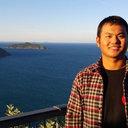Changes of temporomandibular joint and semaphorin 4D/Plexin-B1 expression in a mouse model of incisor malocclusion.
Palabras clave
Abstracto
OBJECTIVE
To investigate the changes in condylar cartilage and subchondral bone of the temporomandibular joint (TMJ) in a mouse model of incisor malocclusion.
METHODS
By bonding a single (single group) or a pair (pair group) of metal tube(s) to the left incisor(s), a crossbite-like relationship was created between left-side incisors in mice. The morphological changes in the TMJ condyles were examined by hematoxylin and eosin and toluidine blue staining. Indices of osteoclastic activity, including tartrate-resistant acid phosphatase (TRAP) staining and macrophage colony stimulating factor (M-CSF) were investigated by histochemistry or real-time polymerase chain reaction (PCR). The osteoblastic activity was indexed by osteocalcin expression. Expressions of semaphorin 4D and its receptor, Plexin-B1, were detected by real-time PCR. Two-way analysis of variance was used to assess the differences between groups.
RESULTS
One week and 3 weeks after bonding the metal tube(s), cartilage degradation and subchondral bone loss were evident histologically. Both indices of osteoclastic activity (TRAP and M-CSF) were significantly increased in cartilage and subchondral bone after bonding the metal tube(s). Osteocalcin expression in cartilage was significantly increased at week 3, while its expression in subchondral bone was significantly increased at week 1 but decreased at week 3. The semaphorin 4D expression in cartilage and subchondral bone was significantly decreased at week 1 but significantly increased at week 3. For Plexin-B1 expression, a significant increase was detected in subchondral bone at week 3.
CONCLUSIONS
Bonding a single or a pair of metal tube(s) to left incisor(s) is capable of inducing remodeling in the TMJ, which involved cartilage degradation and alteration of osteoclastic and osteoblastic activity.





